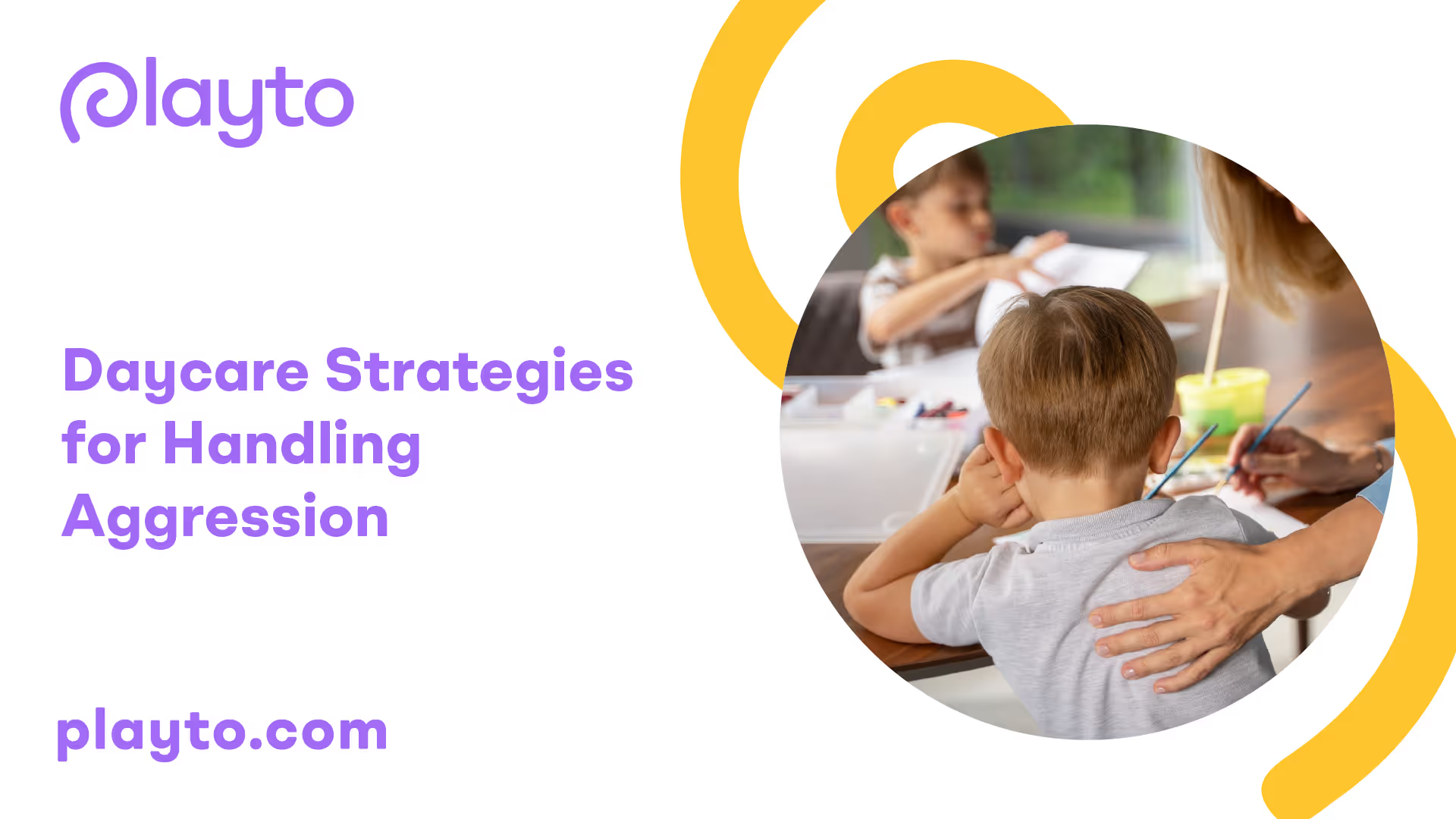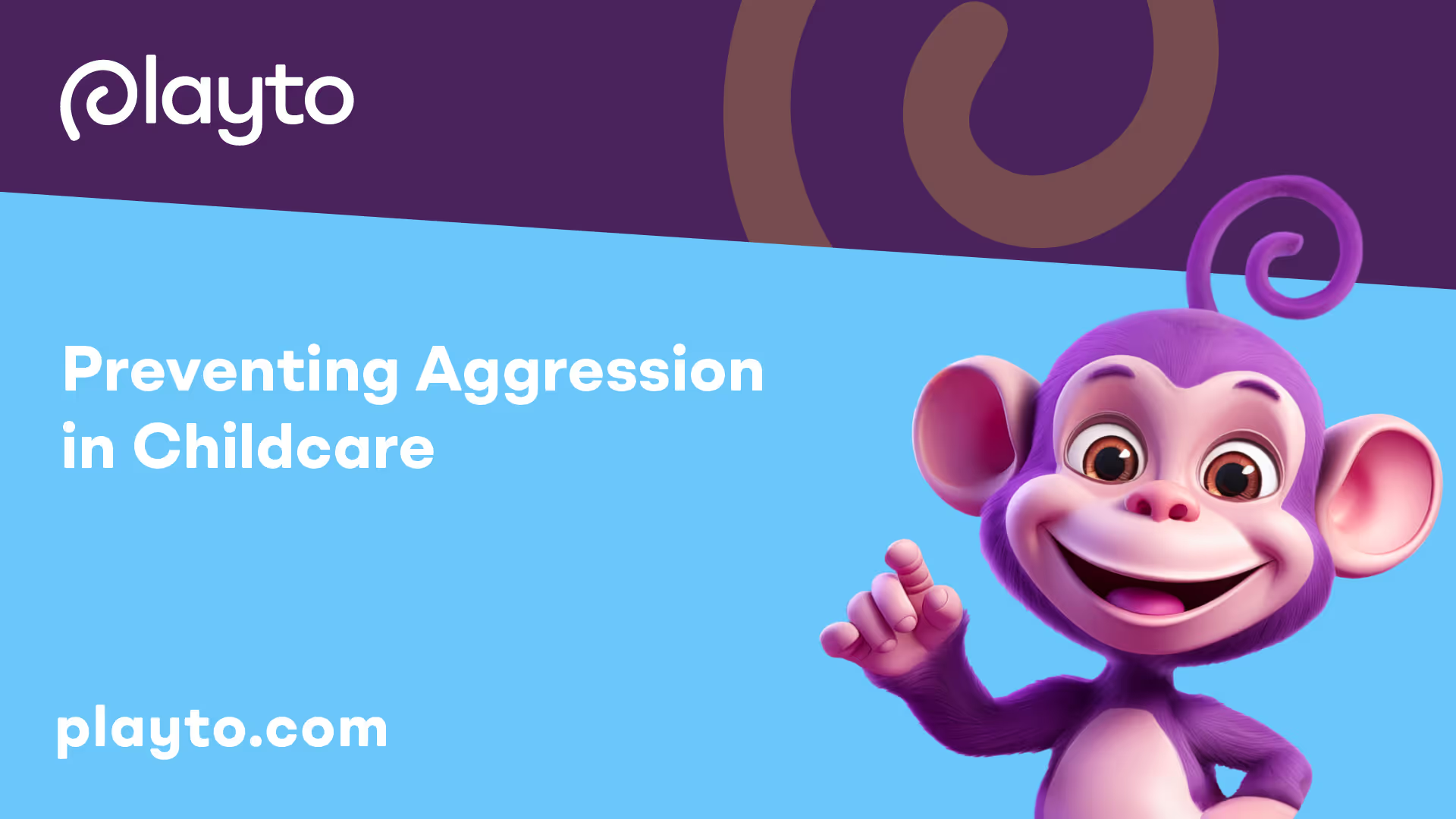Addressing Aggressive Behaviors
When it comes to addressing aggressive behaviors in daycare settings, understanding the nature of aggressive behavior and differentiating between types of aggression is crucial. By gaining a deeper understanding of these aspects, caregivers and educators can implement effective strategies to promote a safe and nurturing environment for children.

Understanding Aggressive Behavior
Aggressive behavior in daycare settings encompasses actions that are intended to hurt, humiliate, harass, harm, or hold power over someone else. It presents challenges from early childhood through high school and requires careful attention and intervention. Recognizing the characteristics and underlying causes of aggressive behavior is essential in addressing and managing it effectively.
To gain a comprehensive understanding, caregivers and educators can consider taking courses or training programs that cover topics like "Understanding Aggressive and Defiant Behavior." For example, the course offered by CCEI explores the identification of aggressive behaviors, differentiation between instrumental aggression and hostile aggression, recognition of features of Oppositional Defiant Disorder (ODD) and Conduct Disorder (CD), and more [1].
Differentiating Types of Aggression
Different types of aggression can manifest in daycare settings, and understanding these distinctions can help caregivers respond appropriately. Two primary types of aggression observed in children are instrumental aggression and hostile aggression.
Instrumental aggression refers to behavior aimed at achieving a specific goal or outcome. It is often motivated by a desire for control or access to resources. For example, a child might snatch a toy from another child to gain possession of it.
Hostile aggression, on the other hand, arises from anger, frustration, or a desire to harm others. It is often characterized by impulsive and reactive behavior. Hostile aggression can manifest as physical acts or verbal aggression, such as hitting, pushing, or name-calling.
By recognizing and differentiating these types of aggression, caregivers can tailor their intervention strategies accordingly, promoting positive behavior and addressing underlying issues.
Understanding aggressive behavior and differentiating between types of aggression provides a solid foundation for effective intervention strategies. In the following sections, we will explore de-escalation strategies, handling meltdowns, and prevention techniques that can further support daycare providers in addressing and managing aggressive behaviors in children.
De-escalation Strategies
In a daycare setting, it's important to have effective de-escalation strategies in place to handle aggressive behaviors and prevent potential crises. De-escalation techniques are crucial for managing meltdowns in children, as these are automatic nervous system responses that children cannot consciously control. By understanding the importance of de-escalation and recognizing escalation cycles, daycare providers can create a safe and supportive environment for children.
Importance of De-escalation
De-escalation techniques are essential for handling meltdowns and reducing the risk of harm to both the child and others. During a meltdown, the brain enters survival mode, shutting down the thinking part and reacting to a perceived threat. Trying to reason with a child during a meltdown, when the logical part of their brain isn't functioning, can make them more agitated. Therefore, it's crucial to remain calm and focus on reassuring the child that they are safe.
Making demands or giving commands during a dysregulated situation can exacerbate meltdowns. It's important to avoid telling a child to stop, calm down, or snap out of it, as these demands won't be effective. The priority should be helping the child calm down and regain control. By employing de-escalation strategies, daycare providers can create a supportive and understanding environment that promotes emotional well-being.
Recognizing Escalation Cycles
To effectively de-escalate a situation, it's crucial to recognize the patterns and stages of an escalation cycle that often precede a meltdown. Familiarizing oneself with these stages can help in responding to meltdowns and potentially preventing them.
The escalation cycle typically involves three stages: the pre-escalation stage, the escalation stage, and the post-escalation stage. During the pre-escalation stage, certain triggers or stressors may cause the child's emotions to escalate. It's important to identify and address these triggers early on to prevent further escalation.
As the child moves into the escalation stage, their emotions intensify, and their behavior becomes more challenging. Signs of escalation can include increased agitation, heightened aggression, or withdrawal. During this stage, it's vital to respond calmly and provide reassurance, as attempts to reason or argue may escalate the situation further.
Finally, the post-escalation stage occurs after the meltdown, when the child is gradually returning to a calmer state. This stage is an opportunity to support the child in processing their emotions and offering strategies for future coping.
By understanding the different stages of an escalation cycle, daycare providers can implement appropriate de-escalation techniques at each stage, creating a supportive and safe environment for children.
Implementing effective de-escalation strategies is crucial for maintaining a positive and nurturing daycare environment. By recognizing the importance of de-escalation and understanding the escalation cycles, daycare providers can effectively respond to aggressive behaviors, manage meltdowns, and promote emotional well-being in children.
Handling Meltdowns
When it comes to handling meltdowns in a daycare setting, it's important to understand the brain response during these episodes and employ effective communication strategies. Meltdowns are automatic nervous system responses that children cannot consciously control. Knowing how to de-escalate and communicate effectively can help avoid potential crises and keep everyone safe.

Brain Response during Meltdowns
During a meltdown, the child's brain enters survival mode, shutting down the thinking part and reacting to a perceived threat. It's crucial to recognize that reasoning with a child during a meltdown, when the logical part of their brain isn't functioning, may not be effective and can potentially make them angrier. Instead, it's essential to remain calm and focus on reassuring the child that they are safe.
Making demands during dysregulated situations can exacerbate meltdowns. It's important to avoid telling a child to stop, calm down, or snap out of it, as it won't be effective. The priority should be helping the child calm down and ensuring their safety. By understanding the brain response during meltdowns, caregivers can provide the necessary support and empathy to help the child navigate through these challenging moments.
Effective Communication Strategies
When a child is experiencing a meltdown, it's crucial to approach the situation with patience and effective communication. Yelling to be heard over a screaming child can be counterproductive and escalate the meltdown. Instead, wait until the child stops screaming and then speak to them calmly and empathetically. Reassure the child that they are safe and provide a supportive presence.
Using non-threatening body language, such as maintaining a safe distance and avoiding physical contact unless necessary, can help create a safe environment for the child. Offering simple and concise statements, using a calm tone of voice, and validating the child's feelings can contribute to de-escalating the situation.
It's essential to remember that each child is unique, and what works for one may not work for another. Caregivers should be prepared to adapt their communication strategies based on the individual needs and preferences of the child.
By understanding the brain response during meltdowns and employing effective communication strategies, caregivers can create a supportive and calm environment during these challenging moments. It is important to prioritize the well-being and emotional regulation of the child while ensuring the safety of everyone involved. For more strategies on handling challenging behaviors, check out our articles on daycare strategies for handling shyness, daycare strategies for handling temper tantrums, and daycare strategies for handling bullying.
Preventing Aggression in Childcare
Preventing aggression in childcare settings is crucial for fostering a safe and positive environment for children. By addressing early childhood aggression and understanding the risk factors associated with aggression, daycare providers can implement effective strategies to promote healthy social interactions.

Early Childhood Aggression
Aggression during early childhood is a common occurrence, often considered a part of growing up. It is important to understand the central theme of aggression and differentiate it from playful behavior. During the preschool years, children may engage in rough and tumble play, which is a form of prosocial assertive play. Distinguishing between playful fighting and aggressive behavior lies in the intent to hurt or frighten. Children may resort to instrumental and physical expression of aggression, such as snatching toys or pushing playmates.
Risk Factors for Aggression
Various factors contribute to the development of aggression in children. Children living in violent neighborhoods may lack prosocial adult role models and opportunities for appropriate play, which can lead to the formation of antisocial behaviors and seeking protection through antisocial groups. Additionally, absence of competent and involved caregivers can hinder the development of internalized self-control. Aggressive symptoms may change with developmental competence in motor and cognitive domains, with different expressions of aggression at different ages [3].
Identifying and addressing the risk factors associated with aggression is crucial in preventing chronic aggression and its negative outcomes in adolescence and adulthood. Early intervention in daycare, preschool, or kindergarten settings plays a significant role in interrupting the potential path to chronic aggression in children displaying aggressive behavior or at risk of developing it.
By understanding early childhood aggression and recognizing its risk factors, daycare providers can implement effective strategies to prevent and address aggressive behaviors in childcare settings. These strategies can help create a nurturing environment that fosters positive social interactions and supports the healthy development of children. For more information on handling various behaviors in daycare, check out our articles on daycare strategies for handling shyness, daycare strategies for handling temper tantrums, and daycare strategies for encouraging teamwork.
Social-Emotional Competence
Social-emotional competence plays a crucial role in preventing and addressing aggression in daycare settings. By focusing on social-emotional development and promoting emotional literacy, caregivers and educators can equip children with the necessary skills to navigate their emotions and interactions with others.
Social-Emotional Development
Social-emotional development refers to the ability to understand and manage one's emotions, establish and maintain positive relationships, and make responsible decisions. It encompasses various skills, including self-awareness, self-regulation, empathy, and effective communication.
In the context of aggression in daycare, fostering social-emotional development is essential in providing children with the tools they need to navigate conflicts, regulate their emotions, and engage in positive social interactions. By promoting social-emotional development, caregivers create an environment where children feel supported, valued, and understood.
Role of Emotional Literacy
Emotional literacy, or the ability to recognize, understand, and express emotions, is a key component of social-emotional competence. By promoting emotional literacy, caregivers can help children develop a deeper understanding of their emotions and learn how to regulate them effectively.
To promote emotional literacy, caregivers can engage in daily discussions about emotions, provide opportunities for children to identify and label their emotions, and read stories that explore different emotional experiences. By incorporating these practices, children can enhance their emotional vocabulary and gain the skills needed to express their emotions appropriately.
Teaching empathy is also vital in preventing aggressive behavior in daycare settings. By cultivating empathy, children learn to understand and consider the feelings of others, fostering a sense of compassion and reducing the likelihood of engaging in aggressive behaviors. Caregivers can model and encourage empathy through acts of kindness, discussions about others' perspectives, and providing opportunities for children to practice empathy in their interactions with peers.
By prioritizing social-emotional competence and focusing on social-emotional development and emotional literacy, daycare providers can create a nurturing environment that promotes positive behavior and reduces the incidence of aggression. Education and training for caregivers are essential to ensure they have the necessary knowledge and skills to support children's social-emotional development effectively. For more strategies on handling challenging behaviors in daycare settings, check out our articles on daycare strategies for handling shyness, daycare strategies for handling temper tantrums, and daycare strategies for encouraging teamwork.
Implementing Effective Interventions
When it comes to handling aggression in daycare settings, implementing effective interventions is crucial to create a safe and nurturing environment for all children. Two types of prevention programs have shown positive effects in reducing aggressive behavior: universal prevention programs and targeted prevention programs.
Universal Prevention Programs
Universal prevention programs are designed to promote positive social-emotional development and address aggression in all children within a daycare or kindergarten setting. One example of a universal prevention program is the Promoting Alternative Thinking Strategies (PATHS) curriculum. This curriculum focuses on enhancing children's social-emotional awareness and teaching them valuable skills for managing their emotions and resolving conflicts.
By implementing universal prevention programs like PATHS, daycare providers can create a supportive and inclusive environment that fosters healthy social interactions and reduces the likelihood of aggressive behaviors. These programs often include structured lessons, activities, and discussions to promote emotional literacy, empathy, and problem-solving skills.
Targeted Prevention Programs
Targeted prevention programs, such as the Incredible Years (IY) Training Program, are designed to identify children at elevated risk for aggressive behavior and intervene early to address malleable risk factors. These programs focus on altering the developmental trajectories of children who may exhibit persistent aggression.
The Incredible Years Training Program provides caregivers and teachers with strategies and techniques to effectively manage challenging behaviors, promote positive social interactions, and enhance children's emotional regulation skills. By targeting specific children who may be at risk for aggression and providing them with additional support, these programs aim to prevent the escalation of aggressive behavior and promote positive developmental outcomes.
Implementing both universal and targeted prevention programs can play a vital role in reducing aggression in daycare settings. By adopting evidence-based strategies and interventions, daycare providers can create a nurturing environment where children feel supported, learn appropriate ways to express themselves, and develop the social-emotional skills necessary for healthy relationships.
For more information on other daycare strategies, such as handling shyness or temper tantrums, please refer to our articles on daycare strategies for handling shyness and daycare strategies for handling temper tantrums. Additionally, promoting teamwork and addressing bullying are important aspects of daycare management. Learn more in our articles on daycare strategies for encouraging teamwork and daycare strategies for handling bullying.
